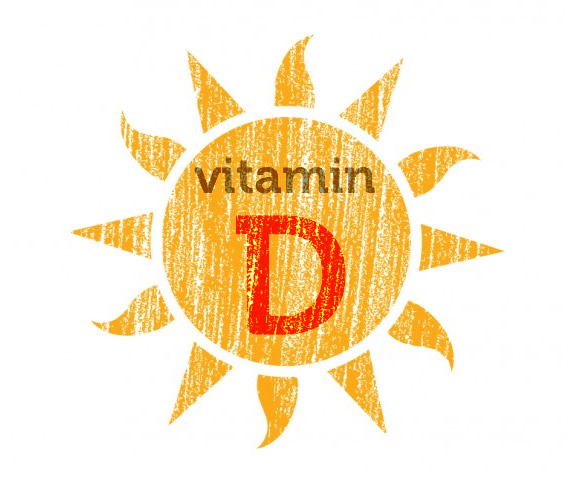 Why we add Vitamin D3 to Auum Omega 3?
Why we add Vitamin D3 to Auum Omega 3?
Health Canada Recommends Vitamin D Supplementation
Vitamin D helps in the normal development and maintenance of bones and teeth. It also helps in the absorption and use of calcium and phosphorus.
An increase of Vitamin D3 is directly linked to improved skin, eye, heart, vascular and respiratory health, as well as enhanced metabolism (weight management), strong bones and improved sleep patterns.
Vitamin D receptors are located in our brain, spinal cord, and CNS. In fact, almost every type of cell has receptors that respond to Vitamin D. Current research indicates that the master key required to enter the CNA library that is in each of our cells is activated Vitamin D. This is how our cells determine the correct response or action when they encounter almost any stimulus. Thus Vitamin D is truly essential for good health.
Vitamin D3 is what you need.
A deficiency in Vitamin D3 has been linked with an increased risk of a host of diseases and associated inflammation, i.e. asthma, autism, diabetes, Alzheimer’s, cancer, MS osteoporosis, SIDS, insomnia, Crohn’s, depression, obesity, etc. Continuing research shows just how essential Vitamin D is and that many, if not most, are deficient when serum levels are measured.
When supplementing, it is important that we get the correct type. Vitamin D3 (cholecalciferol) – is the natural one. The one our body can efficiently further convert into the more active form for use. This natural Vitamin D3 is in Auum Omega 3 Sublingual D. Because Vitamin D is fat-soluble, taking it with your Omega 3 supplement sublingually is by far the most efficient way to get maximum benefits.
The Canadian Cancer Society began recommending that all adults consider supplementing with 1,000 IU of Vitamin D3 daily in June of 2007.
Current lifestyle habits or situations that contribute to low levels of Vitamin D Read more…
Recent studies have found that a vast number of children are deficient in Vitamin D.
Read more below regarding Vitamin D and certain conditions.
***
Vitamin D3 Importance
The Flu and Other Conditions
Vitamin D is important on many different levels, one importance involves the flu. Please note that it has not been established as to what levels of Vitamin D is toxic and it may very well be different by person, and the different source of Vitamin D taken. More studies and research is being conducted.
 Influenza May Be a Sign of Vitamin D Deficiency
Influenza May Be a Sign of Vitamin D Deficiency
There is compelling evidence showing that flu may in fact be a sign of Vitamin D deficiency.
In addition to scientific studies on Vitamin D levels and the seasonality of the flu, an analysis of CDC data indicates that Vitamin D deficient children are also at higher risk of death from the flu.
The data shows that almost two-thirds of 36 children who died from H1N1 had epilepsy, cerebral palsy, or other neurodevelopmental conditions like mental retardation.
All of these neurological conditions are associated with childhood Vitamin D deficiency. Exacerbating the problem further, many of these kids take anticonvulsant drugs, which also lower Vitamin D levels.
In addition, in a large study involving about 19,000 Americans, people with the lowest Vitamin D levels reported having significantly more recent colds or cases of the flu — and the risk was even greater for those with chronic respiratory disorders like asthma. At least five additional studies also show an inverse association between lower respiratory tract infections and Vitamin D levels.
Go to the top.
Disease Prevention
Vitamin D may very well be one of the most beneficial vitamins there is for disease prevention, including the flu. Unfortunately, it’s also one of the vitamins that a vast majority of people across the world are deficient in due to a lack of regular exposure to sunshine.
Part of the explanation lies in the fact that Vitamin D, which forms when your skin is exposed to sunlight, regulates the expression of more than 2,000 genes throughout your body, including ones that influence your immune system to attack and destroy bacteria and viruses.
Hence, being overwhelmed by the “flu bug” could signal that your Vitamin D levels are too low, allowing the flu virus to overtake your immune system. In addition, a number of studies show that the higher your Vitamin D level, the lower your risk of contracting colds, flu, and other respiratory tract infections in general.
- A 2007 study suggests higher Vitamin D status enhances your immunity to microbial infections. They found that subjects with Vitamin D deficiency had significantly more days of absence from work due to respiratory infection than did control subjects.

- A 2009 study on Vitamin D deficiency in newborns with an acute lower respiratory infection (ALRI) confirmed a strong, positive correlation between newborns and mothers’ Vitamin D levels. Newborns with Vitamin D deficiency appear to have an increased risk of developing ALRI, and since the child’s Vitamin D level strongly correlates with its mother’s, the researchers recommend that all mothers optimize their Vitamin D levels during pregnancy, especially in the winter months, to safeguard their baby’s health.
- A similar Indian study published in 2004 also reported that Vitamin D deficiency in infants significantly raised their odds ratio for having severe ALRI.
- The 2009 analysis of the Third National Health and Nutrition Examination Survey, which included 19,000 subjects over the age of 12, also found that higher Vitamin D levels equated to a lowered incidence of upper respiratory infections (URI). The correlation between lower Vitamin D levels and increased risk of URIs was even stronger in individuals with asthma and chronic obstructive pulmonary disease.
- Another 2009 report in the journal Pediatric Research stated that infants and children appear more susceptible to viral rather than bacterial infections when deficient in Vitamin D. And that, based on the available evidence showing a strong connection between Vitamin D, infections, and immune function in children, Vitamin D supplementation may be a valuable therapy in pediatric medicine.
Dr. Michael Holick estimates that 50 percent of the general population is at risk of vitamin D deficiency and insufficiency.
Vitamin D Deficiency Linked to Diabetes
You’re probably aware that obesity is associated with type 2 diabetes, but a new study found low Vitamin D levels may be an even more significant factor. In a study of more than 100 people, those with low Vitamin D levels were more likely to have type 2 diabetes, pre-diabetes, or metabolic syndrome, regardless of their weight. Among obese people, those without metabolic disorders had higher levels of Vitamin D than those with such disorders. And among lean people, those with metabolic disorders were more likely to have low levels of Vitamin D. According to one of the study’s authors:
“Our findings indicate that Vitamin D is associated more closely with glucose metabolism than obesity…The study suggests that Vitamin D deficiency and obesity interact synergistically to heighten the risk of diabetes and other metabolic disorders. The average person may be able to reduce their risk by maintaining a healthy diet and getting enough outdoor activity.”
It’s not the first time Vitamin D has been shown to play a role in diabetes. One Indian study found that Vitamin D and calcium supplementation in combination with exercise can prevent prediabetes from progressing into full-blown diabetes. For every unit increase in Vitamin D levels, the risk of progression to diabetes in people with prediabetes went down by 8 percent.
Go to the top.
Vitamin D Dose Recommendations
Based on the most recent research, the current recommendation is 35 IU’s of Vitamin D per pound of body weight.
So for a child weighing 40 pounds, the recommended average dose would be 1,400 IU’s daily, and for a 170-pound adult, the dose would be nearly 6,000 IU’s. The chart below will give you general approximations for what the recommended daily dose might be for children, young adults, and pregnant women.
- Age Dosage Below 5 – 35 units per pound per day
- Age 5 – 10 2500 units
- Age 18 – 30 5000 units
- Pregnant Women 5000 units
Warning
There is no way to know if the above recommendations are correct. The ONLY way to know is to test your blood. You might need 4-5 times the amount recommended above.
Ideally, your blood level of 25 OH D should be 60 ng/ml.
However, it’s important to realize that Vitamin D requirements are highly individual, as your Vitamin D status is dependent on numerous factors, such as the color of your skin, where you live, and how much sunshine you’re exposed to on a regular basis.
So, although these recommendations may put you closer to the ballpark of what most people likely need, it is simply impossible to make a blanket recommendation that will cover everyone’s needs.
The ONLY way to determine the correct dose is to get your blood tested since there are so many variables that influence your Vitamin D status.
Ideally, you’ll want your Vitamin D level to be between 50-65 ng/ml, year-round. In Canada and Europe, your test results may come back in ml/L. To convert ml/L to ng/ml, simply divide your result by 2.5.
Posted by: Dr. Mercola
References:
http://www.mercola.com/article/vitamin-d-references.htm
http://articles.mercola.com/sites/articles/archive/2009/11/26/want-to-live-longer-try-vitamin-d.aspx
http://articles.mercola.com/sites/articles/archive/2015/03/09/vitamin-d-diabetes-dementia.aspx
Please note the following about the above Dr. Mercola weblinks. The website now requires you to be a subscriber or acquire a membership. Dr. Mercola has been a long time MD on all things holistic.
November 24, 2009

